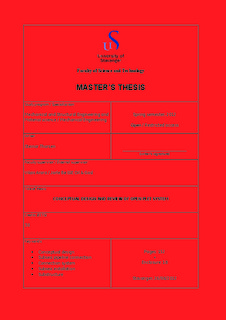| dc.contributor.author | Thorsen, Steinar | |
| dc.date.accessioned | 2014-02-06T09:10:19Z | |
| dc.date.available | 2014-02-06T09:10:19Z | |
| dc.date.issued | 2012 | |
| dc.identifier.citation | | no_NO |
| dc.identifier.uri | http://hdl.handle.net/11250/183156 | |
| dc.description | Master's thesis in Mechanical engineering | no_NO |
| dc.description.abstract | The offshore oil industry has become a subsea industry. The majority of the offshore oil and gas fields developed in the world today are fully, or partially, subsea solutions. A subsea oil and gas field is totally dependent on subsea pipelines, and the reliability of the subsea pipelines is further fully dependent on proper subsea pipeline connections.
A subsea pipeline connection, whether it is a pipe-to-pipe connection or a pipe-to-structure connection, requires a structure for support towards the seabed. For a pipe-to-structure connection, the required support is maintained by the subsea facility which the pipeline is connected onto, while for a pipe-to-pipe connection, which is a stand-alone connection independent of a subsea facility, a purpose-built substructure provides the required support.
The PipeLine End Termination (PLET) is the required substructure for a pipe-to-pipe connection. The PLET is attached to the end of one of the pipelines involved in the connection. Normally the PLET is pre-attached to the pipeline end on the surface, and then the pipeline and the PLET are installed to seabed simultaneously. For pipelines of larger dimensions (approximately above 25 inches), this installation method is not suitable due to the size and the weight of the PLET. Consequently, the assembling of the PLET and the pipeline end takes place on the seabed after them being installed separately.
An “Open PLET” is a PLET structure designed for an assembly operation on the seabed. Current Open PLET systems comprises technical solutions which makes the subsea assembly operation challenging. These installation challenges are defined as follows:
• A difficult operation to position the Open PLET next to the pipeline prior to the subsea assembly operation due to the lack of a physical end stop feature.
• A difficult operation of lifting and shifting the heavy and rigid pipeline from the seabed to over the Open PLET prior to final engagement.
• A difficult operation where the vessel crane pulls the Open PLET on seabed to complete the integration of the pipeline.
A conceptual design of a new Open PLET system is in this thesis developed with the intention to reduce or eliminate these installation challenges.
In engineering design a concept is developed to be a basis for the detailed design of the product. The purpose in a conceptual design phase is to find and evaluate technical solutions which make the product fulfill the functional requirements.
The concept idea and the functional requirements for the new Open PLET system are in this thesis summarized in some “technical issues.” The conceptual design then consists of the technical solutions to these issues.
The main technical solutions of the conceptual design are as follows:
• A longitudinal opening in the structure makes it possible to install the Open PLET straight over the pipeline instead of next to.
• A physical end stop feature facilitates proper positioning.
• The subsea assembly operation is accomplished by lifting the pipeline directly from the seabed to final position on the Open PLET. Guiding elements on the Open PLET positions the pipeline correctly.
• The pipeline is locked in final position by a mechanical locking mechanism which provides a vertical active locking direction.
A determining feature with the concept is the ability for the Open PLET to slide on the seabed. The sliding is required for aligning and guiding purposes, and to facilitate thermal expansion of the pipeline. The weight distri¬bution over the Open PLET is found to be a vital factor for the sliding to occur. This weight distribution factor must be taken into account in the detailed design of the Open PLET.
The sliding feature is also considered as the major drawback of the concept solution. Uncertainty in the soil conditions on the seabed is the main reason as these conditions are determining with respect to the sliding capability. A consideration in further development of the concept is to eliminate the need for the Open PLET to slide on the seabed. | no_NO |
| dc.language.iso | eng | no_NO |
| dc.publisher | University of Stavanger, Norway | no_NO |
| dc.relation.ispartofseries | Masteroppgave/UIS-TN-IKM/2012; | |
| dc.subject | maskinteknikk | no_NO |
| dc.subject | maskinkonstruksjon | no_NO |
| dc.subject | conceptual design | no_NO |
| dc.subject | subsea pipeline connection | no_NO |
| dc.subject | connection system | no_NO |
| dc.subject | subsea installation | no_NO |
| dc.subject | substructure | no_NO |
| dc.title | Conceptual design and review of Open PLET system | no_NO |
| dc.type | Master thesis | no_NO |
| dc.subject.nsi | VDP::Technology: 500::Mechanical engineering: 570::Machine construction and engineering technology: 571 | no_NO |
